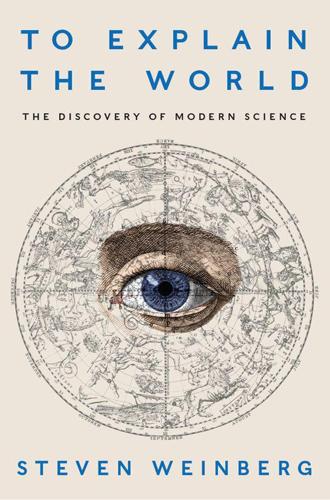
To Explain the World: The Discovery of Modern Science
by
Steven Weinberg
Published 17 Feb 2015
Soon after he came to Frombork, Copernicus wrote a short anonymous work, later titled De hypothesibus motuum coelestium a se constitutis commentariolus, and generally known as the Commentariolus, or Little Commentary.1 The Commentariolus was not published until long after its author’s death, and so was not as influential as his later writings, but it gives a good account of the ideas that guided his work. After a brief criticism of earlier theories of the planets, Copernicus in the Commentariolus states seven principles of his new theory. Here is a paraphrase, with some added comments: 1. There is no one center of the orbits of the celestial bodies.
…
But the problem of parallax is nowhere mentioned in the Commentariolus.) 5. The apparent daily motion of the stars around the Earth arises entirely from the Earth’s rotation on its axis. 6. The apparent motion of the Sun arises jointly from the rotation of the Earth on its axis and the Earth’s revolution (like that of the other planets) around the Sun. 7. The apparent retrograde motion of the planets arises from the Earth’s motion, occurring when the Earth passes Mars, Jupiter, or Saturn, or is passed in its orbit by Mercury or Venus. Copernicus could not claim in the Commentariolus that his scheme fitted observation better than that of Ptolemy.
…
He then described his conclusion: Having thus assumed the motions which I ascribe to the Earth later in the volume, by long and intense study I finally found that if the motions of the other planets are correlated with the orbiting of the Earth, and are computed for the revolution of each planet, not only do their phenomena follow therefrom but also the order and size of all the planets and spheres, and heaven itself is so linked together that in no portion of it can anything be shifted without disrupting the remaining parts and the universe as a whole. As in the Commentariolus, Copernicus was appealing to the fact that his theory was more predictive than Ptolemy’s; it dictated a unique order of planets and the sizes of their orbits required to account for observation, while Ptolemy’s theory left these undetermined. Of course, Copernicus had no way of confirming that his orbital radii were correct without assuming the truth of his theory; this had to wait for Galileo’s observations of planetary phases. Most of De Revolutionibus is extremely technical, fleshing out the general ideas of the Commentariolus. One point worth special mention is that in Book 1 Copernicus states an a priori commitment to motion composed of circles.
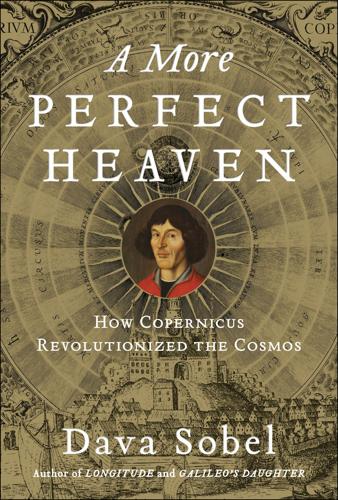
More Perfect Heaven: How Copernicus Revolutionised the Cosmos
by
Dava Sobel
Published 1 Sep 2011
“Stroll through the tombstones,” it counseled those weighed down by their own sorrows. “You will behold man’s greatest joys as in the end they take on the lightness of dust.” Chapter 2 The Brief Sketch The center of the earth is not the center of the universe, but only the center towards which heavy things move and the center of the lunar sphere. —FROM THE Commentariolus, OR Brief Sketch, BY COPERNICUS, CA. 1510 In 1510, when Copernicus, at thirty-seven, assumed his position in residence as a canon of Varmia in Frauenburg, the Cathedral Chapter assigned him a house, or curia, outside the fortification walls, plus two servants and three horses as perquisites of office.
…
He hoped his own conviction would convince others to see the spheres his way, but offered no proofs at this point. He had decided, he said, “for the sake of brevity to leave the mathematical demonstrations out of this treatise, as they are intended for a larger book.” Then he proceeded to count and clarify all the individual planetary motions, arriving, in the final paragraph of the Commentariolus, at the grand total: “Mercury runs on seven circles in all; Venus on five; the earth on three, and round it the moon on four; finally Mars, Jupiter, and Saturn on five each. Altogether, therefore, thirty-four circles suffice to explain the entire structure of the universe and the entire ballet of the planets.”
…
The enormous chasm that suddenly yawned open between Saturn and the stars did not trouble Copernicus, as he had a ready explanation for it in the Creator’s omnipotence: “So vast, without any question, is the divine handiwork of the most excellent Almighty.” Beyond the periphery of the stars, God and His Angels hovered in the invisible heavens of the Empyrean. After completing the Commentariolus around 1510, Copernicus began the slow work of elaborating his theory. The thirty-four circles of the planetary ballet now required exact design specifications, such as the radius of each one, its rate of rotation, and its spatial relationship to the other thirty-three. He could calculate many of these hundred-plus parameters using time-honored methods and tables.
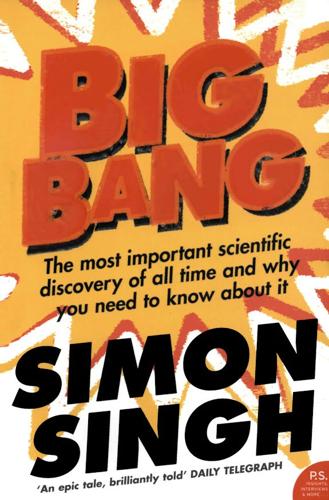
Big Bang
by
Simon Singh
Published 1 Jan 2004
After his uncle Lucas died in 1512 (having quite possibly been poisoned by the Teutonic Knights, who had described him as ‘the devil in human shape’), he had even more time to pursue his studies. He moved to Frauenburg Castle, set up a small observatory and concentrated on fleshing out his argument, adding in all the mathematical detail that was missing in the Commentariolus. Copernicus spent the next thirty years reworking his Commentariolus, expanding it into an authoritative two-hundred-page manuscript. Throughout this prolonged period of research, he spent a great deal of time worrying about how other astronomers would react to his model of the universe, which was fundamentally at odds with accepted wisdom.
…
This amateur astronomer would grow increasingly obsessed with studying the motion of the planets, and his ideas would eventually make him one of the most important figures in the history of science. Surprisingly, all Copernicus’s astronomical research was contained in just 11/2 publications. Even more surprising, these 11/2 publications were hardly read during his lifetime. The 1/2 refers to his first work, the Commentariolus (‘Little Commentary’), which was handwritten, never formally published and circulated only among a few people in roughly 1514. Nevertheless, in just twenty pages Copernicus shook the cosmos with the most radical idea in astronomy for over one thousand years. At the heart of his pamphlet were the seven axioms upon which he based his view of the universe: 1.
…
It is not clear what motivated Copernicus to formulate these axioms and break with the traditional world-view, but perhaps he was influenced by Domenico Maria de Novara, one of his professors in Italy. Novara was sympathetic to the Pythagorean tradition, which was at the root of Aristarchus’ philosophy, and it was Aristarchus who had first posited the Sun-centred model 1,700 years earlier. The Commentariolus was a manifesto for an astronomical mutiny, an expression of Copernicus’s frustration and disillusionment with the ugly complexity of the ancient Ptolemaic model. Later he would condemn the makeshift nature of the Earth-centred model: ‘It is as though an artist were to gather the hands, feet, head and other members for his images from diverse models, each part excellently drawn, but not related to a single body, and since they in no way match each other, the result would be a monster rather than a man.’
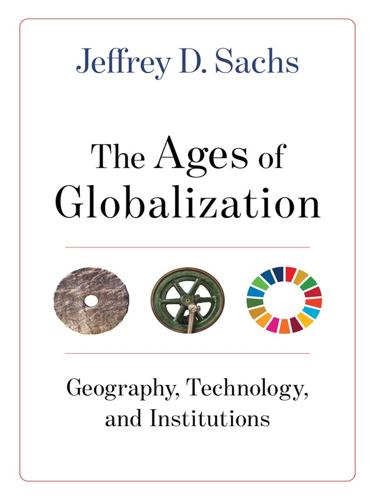
The Ages of Globalization
by
Jeffrey D. Sachs
Published 2 Jun 2020
In 1511, the humanist scholar Desiderius Erasmus of Rotterdam published his satirical critique of the church, In Praise of Folly. In 1513, Nicola Machiavelli of Florence published The Prince, his handbook of power for European princes. In 1514, Nicolaus Copernicus, in Krakow, circulated an early draft of his heliocentric theory, Commentariolus, which was formally published three decades later. In the following year, 1515, Sir Thomas More published Utopia, focusing European minds on the possibilities of political and social reform. And in 1517, Martin Luther posted his Ninety-Five Theses on the church door in Wittenberg, setting off the explosion of the Reformation.
…
See carbon dioxide coal, 16, 18, 51, 131; Britain’s access to, 137, 143; geological deposits of, 145; in industrialization, 27–28, 145 coastal regions, 25–27 Code of Hammurabi, 66 coffee, 119–20 cold zones, 24 colonial era, 163–64 Columbian exchange, 100–103, 101 Columbus, Christopher, 11, 99, 99, 108 Commentariolus (Copernicus), 105 Commonwealth of Independent States (CIS), 27, 112, 113 communications, 15 competitive exclusion, 37 computers, 4–5, 170–71, 175 Conference of Berlin (1885), 152 conflict risks, 192–93 Confucianism, 69, 71–72, 90 consensus, lack of, 211 consonantal writing system, 73 Constantine XI (Byzantine emperor), 98 Constantinople, fall of, 104–5 consumerism, in Europe, 119 Copernicus, Nicolaus, 105, 135 Copper age, 3, 61 Corded Ware culture, 63 cotton, 120–21 countries: illiteracy of, 164, 164–65; life expectancy of, 164, 164–65; per capita GDP of, 142; population and global output of, 209, 209–10 crops, 50, 101, 101 Crosby, Alfred, 100 Cuban Missile Crisis, 213 cultural acceleration, 37–38 Cultural Revolution, 148 cuneiform, 47–48, 66 Cw temperate monsoon climate, 23 Cyrus the Great, 73 da Gama, Vasco, 11, 98–99, 100 data, 4, 169, 172, 219–20, 226n7 da Vinci, Leonardo, 135 Declaration of Independence, 131 Decline and Fall of the Roman Empire (Gibbon), 131 decolonization, 163–67 Deep Blue (IBM computer), 175 demographic changes, 2 Deng Xiaoping, 180 Denisovans, 3, 35–37 Department of Defense, U.S., 171 developing countries, 178, 179 Diamond, Jared, 46 Dias, Bartolomou, 98 Digital Age, 2, 4–5, 196; economic growth in, 193–94; global interactions in, 11 digital revolution, 166, 168, 170–77, 186 digital technologies, 181 Diocletian (Roman emperor), 77–80 directed technical change, 199 diseases: of Africa, 152; from Europe, 102; of livestock, 101–2; smallpox, 102; tropical vector-borne, 49, 117; trypanosomiasis, 50 divergence, great global, 143–46, 144 dog domestication, 54–55 domestication, animal, 18–19, 46, 54–59 donkeys, 47, 55, 57–59, 67 Drake, Francis, 109, 116 dromedary camels, 55 droughts, 190, 191 dryland empires, 51 dry regions, 22, 24 Dutch East India Company, 108–9, 120 Dylan, Bob, 30 Earth, 103, 138 East Asia, 165 East India Company, 108–10, 116, 120, 148 East Indies, 108 ecological crisis, 170 ecological zones, 45–46 Economic Consequences of the Peace, The (Keynes), 155–56, 158 economic development: Britain and U.S., 154, 154; in China, 180; extreme poverty ended by, 198–99; primary energy reserves in, 27–28; riverine cities in, 47–48; from technologies, 21 economic growth, 10, 138; in Digital Age, 193–94; living standard through, 196–97; sustainable, 187 economics, 10, 159, 184 egalitarianism, 39–40 Egypt, 47, 60, 73; Britain controlling, 154; earliest kingdoms of, 66 Eisenhower, Dwight D., 199 Eldorado city, 117 electricity, 141 Elizabeth (queen of England), 110, 116 Emancipation Decree of 1861, 121 Empire of Cotton (Beckert), 120 empires: Achaemenid, 74–75, 77; Africa divided by European, 153; Akkadian, 66; of Alexander the Great, 76; British, 112, 154–55; Byzantine, 85–88, 86; of Classical Age, 69; climate zones distribution of, 83–84, 84; dryland, 51; of Eurasia, 82, 82–83; globalization with competing, 28; greed in building, 114–15; Habsburg, 157; Han, 80–83; Hellenistic, 76; land-based, 3–4, 73–76; lucky latitudes and land, 73–74; Maratha, 148; Mongol, 65, 86, 91–93, 92; Mughal, 111, 148; multiethnic multireligious, 11; Neo-Assyrian, 66, 73–74, 74; Ottoman, 89, 111, 158; Parthian, 82–83; Portugal and, 110, 110–11; Roman, 77–80, 82–83, 85–88, 156; Romanov, 158; Russian, 27, 112–14; Safavid, 111; Seleucid, 77; temperate zone, 51; Timurid, 93, 93–94; transoceanic, 4; Umayyad, 87, 87.
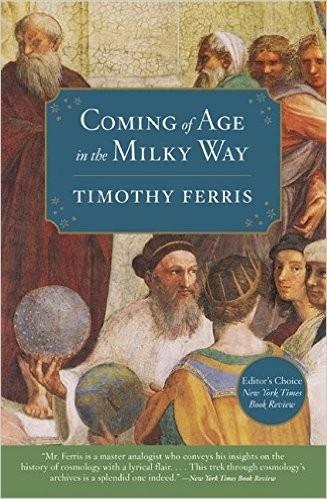
Coming of Age in the Milky Way
by
Timothy Ferris
Published 30 Jun 1988
Ibid., p. 65. 19. In Heyerdahl, 1979, p. 147. 20. In Morison, 1963, p. 383. 21. In Mason, 1977, p. 243. 22. In MacCurdy, 1939, p. 276. CHAPTER FOUR: THE SUN WORSHIPERS 1. Copernicus, On the Revolutions, Duncan translation, preface. 2. In Panofsky, 1969, p. 10. 3. Copernicus, Commentariolus, in Rosen, 1959. 4. Copernicus, On the Revolutions, John Dobson and Selig Brodetsky, translators, Occasional Notes of the Royal Astronomical Society, Vol. 2, No. 10, 1947, in Kuhn, 1979, p. 139. 5. Plutarch, Moralia, XII, p. 925; Cherniss and Helmbold translation, p. 75. 6. Nicole Oresme, “The Compatibility of the Earth’s Diurnal Rotation With Astronomical Phenomena and Terrestrial Physics,” in Grant, Edward, 1974, p. 505. 7.
…
Warsaw: Polish Scientific Publishers, 1978; Baltimore: Johns Hopkins University Press, 1978. Large format, with a commentary by Rosen. —————. On the Revolutions, ed. and trans. A.M. Duncan. New York: Barnes & Noble, 1976. —————.On the Revolutions, trans. Charles Glenn Wallis. Chicago: University of Chicago Press, 1952. —————. Three Copernican Treatises: The Commentariolus of Copernicus, the Letter Against Werner, the Narratio Prima of Rheticus, ed. and trans. Edward Rosen. New York: Dover, 1959. Shorter works of Copernicus not previously translated into English. Cornell, James. The First Stargazers. New York: Scribner’s, 1981. Cornford, F.M. Plato’s Cosmology.
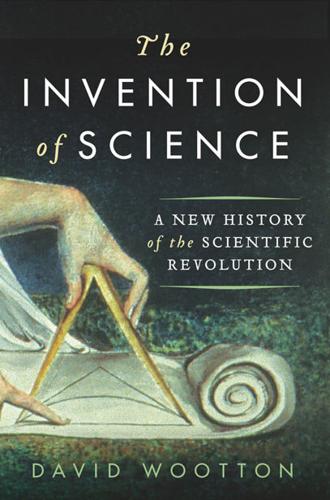
The Invention of Science: A New History of the Scientific Revolution
by
David Wootton
Published 7 Dec 2015
Thus Copernicus argued for a spherical Earth – appealing to the evidence of the shape of the Earth’s shadow cast on the moon during eclipses to confirm that the Earth was to all intents and purposes a perfect sphere, the occasional mountain and valley notwithstanding – a crucial first step towards arguing that the Earth rotates on a north–south axis. By 1543 the broad outline of Copernicus’s argument for the Earth as a single globe was conventional. But we know that Copernicus had first formulated his views by 1514, for at that date at least one copy of his preliminary sketch, the Commentariolus, or Little Commentary, was in existence.49 He gives us two accounts of the development of his thinking, one at the beginning of the Little Commentary and the other at the beginning of On the Revolutions. From them we learn that he had long been dissatisfied with conventional astronomical theories, that he had engaged in a systematic programme of reading in an attempt to identify alternatives, that the idea that the Earth moved had at first seemed to him absurd but that he had persisted with it, determined to see if it could provide the basis for a new account of the movements of the heavens.
…
‘The Phrase Libertas philosophandi’. Journal of the History of Ideas 14 (1953): 310–16. Swerdlow, Noel M. ‘Copernicus and Astrology, with an Appendix of Translations of Primary Sources’. Perspectives on Science 20 (2012): 353–78. ———. ‘The Derivation and First Draft of Copernicus’s Planetary Theory: A Translation of the Commentariolus with Commentary’. Proceedings of the American Philosophical Society 117 (1973): 423–512. ———. ‘An Essay on Thomas Kuhn’s First Scientific Revolution: The Copernican Revolution’. American Philosophical Society Proceedings 141 (2004): 64–120. ———. ‘Montucla’s Legacy: The History of the Exact Sciences’.
…
65 Bacon’s model 91 conceptions of the Earth 111 discovery claims of 87–8, 89 Galileo and 91–2 important book regarding 76 legacy of 535 Mersenne on 81 naming places 98 prior reward for discovery 106 Ptolemy and 121, 184 rejecting the ancients 73 social status 283 comets 191–3, 303, 619–20n59 ‘Comment on Grünbaum’s Claim, A’ (W. V. O. Quine) 514n Commentariolus (Nicolaus Copernicus) 137–8, 139, 142 common sense 529, 532, 533, 537, 543 Common Sense (Thomas Paine) 20 compasses 327–30 deviation and dip 481 discovery of America and 60 Greeks and Romans 62 magnets and 327–8 needles of 388 Compendium of Arithmetic, Geometry, Proportions and Proportionality, A (Luca Pacioli) 176 competition 92–3, 104, 108 Conan Doyle, Arthur 400 Conant, James Bryant 394, 544 Concerning the Recent Phenomena of the Aetherial World (Tycho Brahe) 193 Congo River 79 Consideratione (Giambattista Benedetti) 27 consistency 270n Constantinople 184, 186n, 187, 451 constraint 589–90 constructivism 516–17, 591 Contarini, Cardinal Gasparo 73 Continuation of New Experiments, A (Robert Boyle) 492, 503 Continuation of the New Digester, A (Denis Papin) 504–10 controversy and change 245–7 Conversations on the Plurality of Worlds (Bernard de Fontenelle) 231 Conversations with Galileo’s Starry Messenger (Johannes Kepler) 8–9, 302 Copernican Revolution, The (Thomas Kuhn) 18, 145, 246n, 516 Copernicus, Nicolaus 137–59 see also On the Revolutions of the Heavenly Spheres acceptable margins of error for 262 altera orbis terrarium 132 background 137 Bacon dismisses 107 Bellarmine’s attitude to 388 Bruno and 146–9 Catholic condemnation of 104, 149, 197n, 214 conception of Earth 3n contemporary knowledge of 7 crater named after 102 Descartes and 362 difficulties implicit in theories 218 Digges and 149–51, 154–9 Earth as one spherical globe 138 Earth’s rotation described 139 Galileo and 45, 91–2, 233, 267, 358, 371, 395n Gilbert tries to justify 329 Greek forebears 78, 91 Gresham’s Law and 304 heliocentrism and geoheliocentrism 140 Hobbes on 39 hypotheses of 386 Kepler’s Rudolphine tables 307 Kuhn on 13n, 55, 562 laws of astronomy claim 370 mathematician, as 424 microcosm and macrocosm 244 monetary reform expertise 206n nature of the earth 525–6 opposition to 145 Ptolemy and 144–5, 152, 154, 246 reading material of 141–3 reflected light of planets 245 Sacrobosco and 229 spheres of earth and water 116 success of system, factors in 516 summary 137 three systems of the cosmos 97, 99 two spheres theory rejected 139 Tycho Brahe and 140, 193–5, 223, 226, 227 Venus and Earth 222 Vesalius and 183 copyright 101n Coriolanus (William Shakespeare) 5 corpuscular philosophy 433–4, 443, 446, 447, 460 Cortes, Hernan 38–9 Corvinus, Lawrence 139 Cosimo II (de’ Medici) 214 Cosmographiæ introductio, The (Martin Waldseemüller) 59n, 124 Cosmographic Book (Peter Apian) 201, 202 Cosmographic Mystery, The (Johannes Kepler) 212 Cotes, Roger 322, 375 Coulanges, Fustel de 550n Course of Experimental Philosophy, A (J.
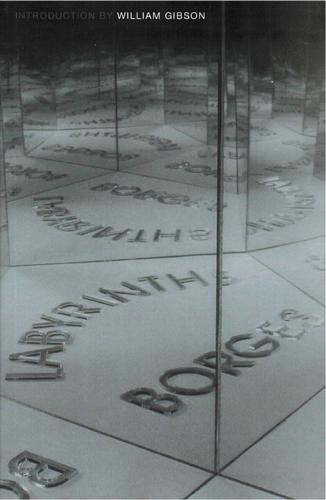
Labyrinths
by
Jorge Luis Borges
,
Donald A. Yates
,
James E. Irby
,
William Gibson
and
André Maurois
Published 1 Jan 1962
The first seven are “planetary” skies (the firmaments of the Moon, Mercury, Venus, the Sun, Mars, Jupiter, Saturn); the eighth, the firmament of the fixed stars; the ninth, the crystal firmament which is also called the Primum mobile. This in turn is surrounded by the Empyrean, which is composed of light. All this elaborate apparatus of hollow, transparent and gyrating spheres (one system required 55 of them) had come to be an intellectual necessity; De hypothesibus motuum coelestium commentariolus is the timid title which Copernicus, denier of Aristotle, placed at the head of the manuscript that transformed our vision of the cosmos. For one man, for Giordano Bruno, the rupture of the stellar vaults was a liberation. He proclaimed, in the Cena de la ceneri, that the world is the infinite effect of an infinite cause, and that divinity is close by, “for it is within us even more than we ourselves are within ourselves.”
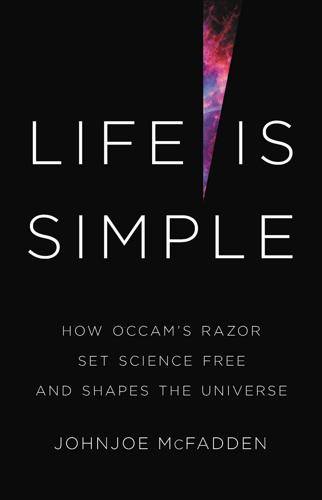
Life Is Simple: How Occam's Razor Set Science Free and Shapes the Universe
by
Johnjoe McFadden
Published 27 Sep 2021
To eliminate this, while retaining circular orbits, Copernicus had to resort to the Ptolemaic device of introducing several new epicycles, effectively adding back much of the complexity that heliocentricity had eliminated. Despite this setback, in 1514, the year Rheticus was born, Copernicus posted a short astronomical treatise entitled Commentariolus (Little Commentary) to a select group of European scholars. His paper created a ripple of curiosity that even reached Rome where it received a positive reception. In 1517, he received a letter from the Pope’s secretary, Cardinal Nicholas Schoenburg, urging Copernicus ‘to communicate your discovery to the learned world’.
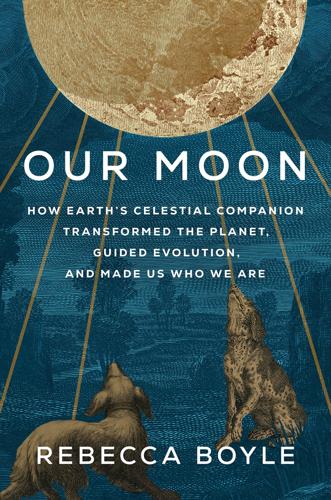
Our Moon: How Earth's Celestial Companion Transformed the Planet, Guided Evolution, and Made Us Who We Are
by
Rebecca Boyle
Published 16 Jan 2024
Hassan Tahiri, “The Birth of Scientific Controversies, The Dynamics of the Arabic Tradition and Its Impact on the Development of Science: Ibn al-Haytham’s Challenge of Ptolemy’s Almagest,” in Rahman, Street, and Tahiri, Unity of Science in Arabic Tradition, 208. 4. Ibid., 209. 5. Moller, Map of Knowledge, TK. 6. Nicolaus Copernicus, Commentariolus, quoted in Bauer, Story of Western Science, 47. 7. Sobel, More Perfect Heaven, 50. 8. Nicolaus Copernicus, De Revolutionibus Orbium Cœlestium, Libri VI, trans. Edward Rosen (Warsaw: Polish Scientific Publications, 1978), 173. Additional quotes in this section are from this translation. 9. Modern scholars have found evidence that al-Tusi’s geometry was translated into both Greek and Hebrew in the thirteenth century, suggesting widespread transmission.
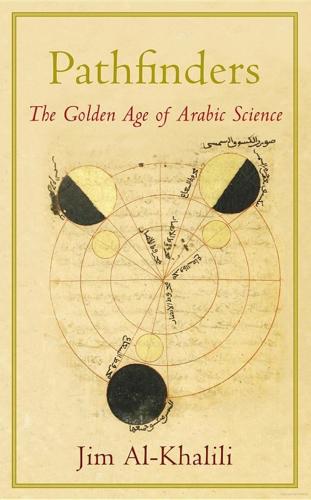
Pathfinders: The Golden Age of Arabic Science
by
Jim Al-Khalili
Published 28 Sep 2010
Aydin Sayili, The Observatory in Islam and its Place in the General History of the Observatory, Publications of the Turkish Historical Society, 7/38 (Ayer Co. Pub., Ankara, 1988). 10. The term was coined by historian Edward Kennedy in his paper ‘Late Medieval Planetary Theory’, Isis, 57 (1966), pp. 365–78. 11. Noel Swerdlow, ‘The Derivation and First Draft of Copernicus’ Planetary Theory: A Translation of the Commentariolus with Commentary’, Proceedings of the American Philosophical Society, 117 (1973), p. 426. 12. Willy Hartner, ‘Copernicus, the Man, the Work, and its History’, Proceedings of the American Philosophical Society, 117 (1973), pp. 413–22. 13. Swerdlow, ‘The Derivation and First Draft of Copernicus’ Planetary Theory’, p. 423. 14.
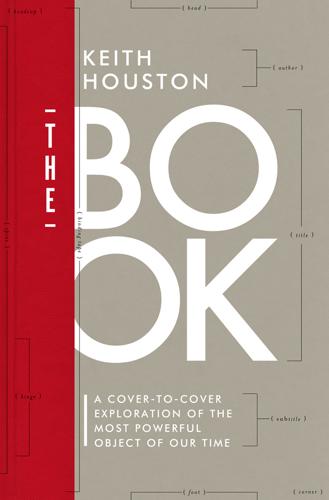
The Book: A Cover-To-Cover Exploration of the Most Powerful Object of Our Time
by
Keith Houston
Published 21 Aug 2016
Robert Proctor, The Printing of Greek in the Fifteenth Century (Oxford: The Bibliographical Society, 1900), 12–13; Stephan Füssel, “Bringing the Technical Inventions Together,” in Gutenberg and the Impact of Printing (Farnham, UK: Ashgate Publishing, 2005), 15–18. 31. Davies, Aldus Manutius, 14–15. 32. Ibid., 20–26. 33. Ibid., 33–39; “Cornucopiae Linguae Latinae (Ed: Aldus Manutius). Add: Commentariolus in Prohemium Historiae Naturalis Plinii. Cornelius Vitellius: Epistola Parthenio Benacensi,” Incunabula Short Title Catalogue, British Library, accessed November 1, 2014, http://istc.bl.uk/search/search.html?operation=record&rsid=131906&q=0; “Hypnerotomachia Poliphili. Add: Leonardus Crassus, Johannes Baptista Scytha and Andreas Maro,” Incunabula Short Title Catalogue, British Library, accessed November 1, 2014, http://istc.bl.uk/search/search.html?
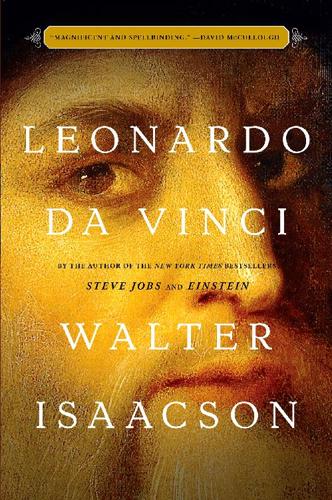
Leonardo Da Vinci
by
Walter Isaacson
Published 16 Oct 2017
Richter, 990; Capra Learning, 70, 83; Stephen Jay Gould, Leonardo’s Mountain of Clams and the Diet of Worms (Harmony, 1998), 17; Andrea Baucon, “Leonardo da Vinci, the Founding Father of Ichnology,” Palaios 25 (2010), 361. 42 Windsor, RCIN 912669v; Notebooks/J. P. Richter, 886. 43 Copernicus in his Commentariolus, written c. 1510–14, first proposed his heliocentric theory that the apparent movements of heavenly bodies came from the Earth’s rotation and movements. 44 Paris Ms. F, 41b; Notebooks/J. P. Richter, 858. 45 Paris Ms. F, 22b; Notebooks/J. P. Richter, 861. 46 Paris Ms. F, 41b; 4b; Notebooks/J.